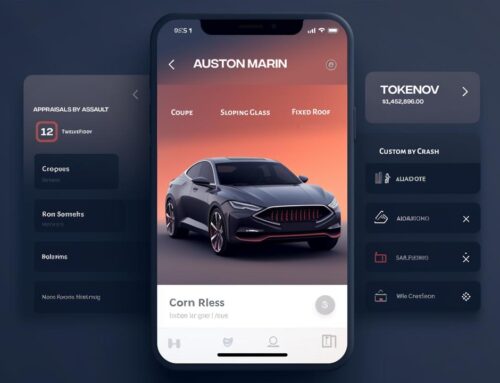How to Create High-Quality, Original, and Informative Content
Creating high-quality, original, and informative content is essential to ensure that your website or blog provides value to users and ranks well on search engines. In this article, we will explore the steps involved in creating content that meets users’ needs and adds value to their search queries.
1. Understand Your Target Audience
Before you start creating content, you need to understand who your target audience is and what they are looking for.
A. Define your target audience
- Consider demographics such as age, gender, and location
- Identify their interests and needs
- Determine the problems they are facing and how your content can help them
B. Conduct audience research
- Use surveys and questionnaires to gather insights
- Analyze your website analytics to identify popular content
- Monitor social media and online forums to understand trending topics
C. Create user personas
- Develop fictional characters that represent your target audience
- Include details like their goals, challenges, and preferences
- Use these personas to guide your content creation process
2. Conduct Keyword Research
Keyword research is crucial in determining the search terms your target audience is using and the topics they are interested in.
A. Use keyword research tools
- Google Keyword Planner
- Ahrefs
- SEMrush
- Moz Keyword Explorer
B. Identify relevant keywords
- Analyze search volume and competition
- Choose long-tail keywords for more targeted traffic
- Group related keywords for topical relevance
C. Incorporate keywords strategically
- Include primary keywords in title, headings, and meta description
- Use secondary keywords throughout the content
- Avoid keyword stuffing and focus on natural language
3. Create a Content Plan
A content plan helps you organize and schedule your content creation efforts.
A. Set content goals
- Determine the purpose of your content (e.g., brand awareness, lead generation)
- Identify the desired outcome (e.g., increased traffic, conversions)
- Set measurable objectives (e.g., number of shares, organic traffic growth)
B. Develop content ideas
- Brainstorm topics related to your target audience and keywords
- Use competitor analysis to identify gaps and opportunities
- Consider different content formats (e.g., blog posts, videos, infographics)
C. Create a content calendar
- Plan the frequency and timing of your content
- Assign deadlines and responsibilities to team members
- Use tools like Google Calendar, Trello, or Asana to manage your schedule
4. Craft Engaging Content
High-quality content should be engaging, easy to read, and provide valuable information to the reader.
A. Write compelling headlines
- Make your headlines clear, concise, and intriguing
- Use numbers, questions, or emotional words to capture attention
- Test multiple headlines to determine which performs best
B. Use a clear structure
- Break your content into sections with H2 and H3 headings
- Use short paragraphs and sentences for readability
- Incorporate bullet points and sub-bullet points for easy scanning
C. Add visual elements
- Include relevant images, videos, or infographics to support your content
- Use high-quality visuals to maintain a professional appearance
- Optimize images for SEO with descriptive file names and alt tags
D. Write in a conversational tone
- Use a natural and approachable writing style
- Address your readers directly by using “you” and “your”
- Avoid jargon and complex terminology
5. Optimize Your Content for SEO
Optimizing your content for search engines is essential to rank higher and attract more organic traffic.
A. On-page SEO optimization
- Use title tags and meta descriptions to describe your content
- Include primary and secondary keywords in headings and body text
- Use internal and external links to provide additional resources
B. Improve page speed and user experience
- Optimize images and videos to reduce file size
- Minimize the use of heavy scripts and plugins
- Ensure mobile-friendliness and responsive design
C. Create high-quality backlinks
- Reach out to industry influencers and bloggers for guest posting opportunities
- Produce share-worthy content that others will naturally link to
- Participate in relevant forums and communities to share your expertise
6. Promote Your Content
Creating high-quality content is just the beginning; you also need to actively promote it to reach a wider audience.
A. Utilize social media
- Share your content on popular platforms like Facebook, Twitter, and LinkedIn
- Engage with your audience by responding to comments and questions
- Use hashtags and mentions to increase visibility
B. Leverage email marketing
- Build an email list of subscribers who are interested in your content
- Send regular newsletters and updates to keep your audience engaged
- Personalize your emails to improve open and click-through rates
C. Collaborate with influencers and industry experts
- Partner with influencers who share your target audience
- Conduct interviews, co-create content, or host webinars together
- Leverage their reach to expose your content to a larger audience
7. Measure Your Content Performance
Monitoring and analyzing your content’s performance helps you identify areas of improvement and adjust your strategy accordingly.
A. Track key performance indicators (KPIs)
- Monitor metrics like page views, time on page, and bounce rate
- Measure social media engagement, such as likes, shares, and comments
- Analyze email open rates, click-through rates, and conversions
B. Use analytics tools
- Google Analytics for website performance tracking
- Social media analytics platforms for engagement metrics
- Email marketing software for subscriber behavior analysis
C. Continuously optimize your content
- Update and refresh outdated content to maintain relevance
- Conduct A/B testing to identify the best-performing elements
- Apply insights gained from performance analysis to future content creation
Biggest takeaways, creating high-quality, original, and informative content involves understanding your target audience, conducting keyword research, crafting engaging content, optimizing for SEO, promoting your work, and measuring its performance. By following these steps, you will effectively meet your users’ needs and add value to their search queries, improving your online presence and driving long-term success for your brand.
10 most important SEO practices we need to do today.








